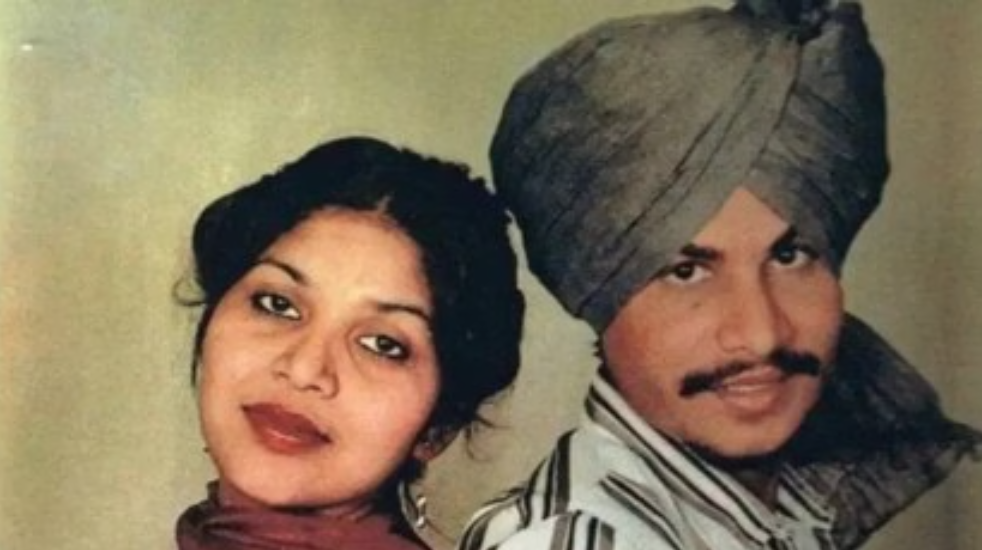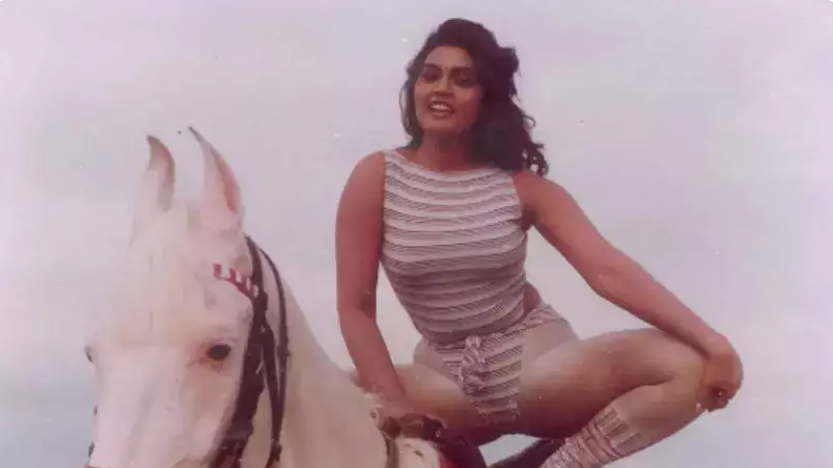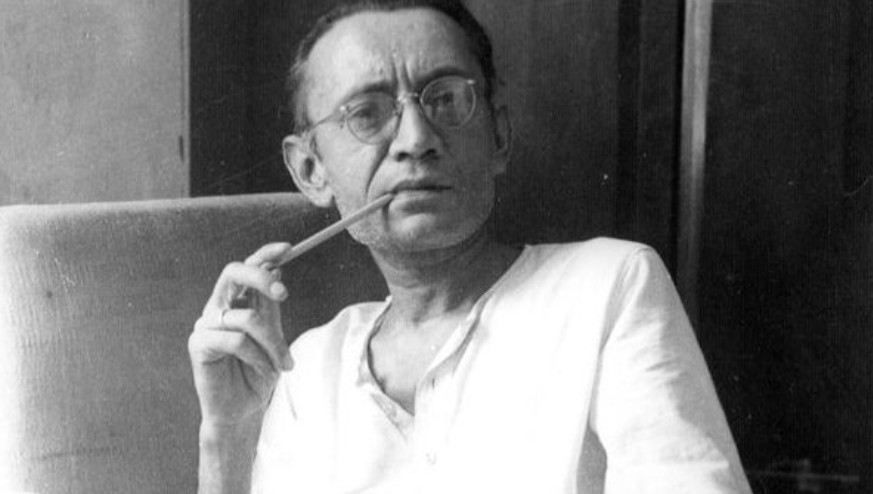Imtiaz Ali’s latest film “Chamkila” is a vibrant and deftly crafted musical biopic that explores the extraordinary life and tragic death of Amar Singh Chamkila, the renowned Punjabi singer. Starring Diljit Dosanjh in a career-defining performance as Chamkila and Parineeti Chopra as his wife and singing partner Amarjot, the film is a captivating ode to the power of music as a tool of rebellion.
Comparing “Chamkila” and “The Dirty Picture”: A Tale of Societal Hypocrisy and Tragic Endings


The films “Chamkila” and “The Dirty Picture” share striking similarities in their portrayal of artists who faced societal backlash despite their immense popularity. Both Amar Singh Chamkila and Silk Smitha, the real-life figures portrayed in these films, were targeted by the very society that consumed their content voraciously.
In “Chamkila,” Amar Singh Chamkila’s provocative and often profane lyrics resonated with the masses, making him a wildly popular Punjabi folk singer. Similarly, in “The Dirty Picture,” Silk Smitha’s bold and sensual performances in South Indian films made her a household name. However, both artists faced criticism and moral policing from certain sections of society who viewed their work as vulgar and corrupting.
| Artist | Popularity | Societal Backlash |
|---|---|---|
| Amar Singh Chamkila | Wildly popular Punjabi singer | Targeted by extremists and moralists for his provocative lyrics |
| Silk Smitha | Sensational South Indian actress | Criticized for her bold and sensual performances |
The hypocrisy of society is evident in both films. While people flocked to Chamkila’s concerts and bought his records in large numbers, they also labeled him as a corrupting influence on youth and family values. Similarly, Silk Smitha’s films were box office hits, but she faced moral judgment and was ostracized by the very industry that benefited from her talent.
Tragically, both artists met untimely deaths. Chamkila and his wife, Amarjot, were gunned down by unidentified assailants in 1988, while Silk Smitha died by suicide in 1996. Their deaths were a stark reminder of the price they paid for challenging societal norms and pushing boundaries in their respective fields.
| Artist | Tragic Ending |
|---|---|
| Amar Singh Chamkila | Gunned down by unidentified assailants in 1988 |
| Silk Smitha | Died by suicide in 1996 |
“Chamkila” and “The Dirty Picture” serve as powerful commentaries on the double standards of society and the challenges faced by artists who dare to be different. These films shed light on the lives of two extraordinary individuals who, despite their immense popularity, were ultimately consumed by the very society that celebrated them.
Both films highlight the need for a more accepting and less judgmental society that appreciates art and artists for their contributions, rather than subjecting them to moral policing and societal pressure. The tragic endings of Amar Singh Chamkila and Silk Smitha serve as a reminder of the urgent need for change in our collective mindset.
The Societal hypocrisy is not limited to any boundaries or country though. There are many such examples in the west too but not going too far ahead another such example in the past was Saadat Hasan Manto, a renowned Urdu writer, faced similar societal backlash for his raw and unfiltered portrayal of society, particularly during the partition of India in 1947. Manto’s writing style was characterised by brutal realism and a willingness to tackle taboo subjects such as sex, desire, alcoholism, and prostitution. He aimed to expose the ugly face of society by depicting the lives and psychological aspects of his characters.

| Writer | Controversial Work | Societal Backlash |
|---|---|---|
| Saadat Hasan Manto | Short stories depicting the partition, sex, desire, alcoholism, and prostitution | Accused of obscenity and tried several times in Pakistan[4] |
Despite the immense popularity of his stories, Manto was often accused of obscenity due to his frank and explicit writing, and was tried several times for this in Pakistan. However, he believed in representing the essence of society, even if it made people uncomfortable.
The hypocrisy of society is evident in the way people consumed Manto’s work, which provided a poignant and insightful account of the chaos, violence, and human suffering during the partition, while simultaneously criticizing him for his choice of subjects and style of writing.
Manto’s case also highlights the double standards of a society that is willing to engage with and consume art that reflects its own realities, but is quick to judge and condemn the artist for bringing these realities to light. This is similar to the experiences of Chamkila and Silk Smitha, whose popularity was matched by the moral outrage they faced from certain sections of society.
Plot Summary: A Non-Linear Narrative of Chamkila’s Life
The film opens with the shocking daylight murder of Chamkila, Amarjot, and two of their troupe members in 1988. It then weaves back and forth in time, tracing Chamkila’s meteoric rise from a poor Dalit laborer to a wildly popular singer known for his provocative and often profane lyrics that challenged societal norms and gave voice to the desires and struggles of the working class.
| Key Events | Description |
|---|---|
| Opening Scene | The shocking murder of Chamkila and his troupe |
| Flashbacks | Tracing Chamkila’s life from a poor laborer to a famous singer |
| Controversial Lyrics | Exploring the impact of Chamkila’s rebellious music on society |
Diljit Dosanjh’s Career-Defining Performance as Chamkila
Diljit Dosanjh completely immerses himself in the role of Chamkila, capturing the singer’s gentle spirit, musical genius, and undeniable stage presence. He delivers a delectable and authentic performance, masterfully embodying Chamkila’s mannerisms, physical traits, and singing style. Parineeti Chopra provides able support as Amarjot, though her role is more limited.
| Actor | Role | Performance |
|---|---|---|
| Diljit Dosanjh | Amar Singh Chamkila | Career-defining, authentic portrayal |
| Parineeti Chopra | Amarjot | Supportive role, limited screen time |
Imtiaz Ali’s Insightful Screenplay and Immersive Direction
Imtiaz Ali and his brother Sajid’s script offers a fascinating glimpse into Chamkila’s psyche and the political and cultural landscape of 1980s Punjab. The film explores how Chamkila’s “vulgar” songs about sex, drinking, and drugs resonated with the masses but also made him a target for extremists and moralists who saw him as a corrupting influence.
Ali employs an energetic and immersive filmmaking style, using animation, tinted frames, split screens, and more to approximate the wildness of Chamkila’s world and the cultural ferment of the times.
AR Rahman’s Pulsing Soundtrack: A Tribute to Chamkila’s Music
The film benefits greatly from AR Rahman’s pulsing original soundtrack, which includes several of Chamkila’s hit songs sung live by Dosanjh and Chopra. Standout tracks include:
- “Ishq Mitaye”: An aching ballad
- “Naram Kaalja”: A rousing celebration of female desire
- “Pehle Lalkare Naal”: Chamkila’s breakout hit that kickstarted his career
The music serves as a crucial element in capturing Chamkila’s legacy and the essence of his rebellious spirit.
Themes and Cultural Significance: Chamkila’s Enduring Legacy
“Chamkila” explores the power of music as a tool of rebellion and a voice for the working class. The film delves into the enduring legacy of Amar Singh Chamkila in Punjabi music and culture, showcasing how his provocative lyrics and unforgettable melodies continue to resonate with audiences today.
| Theme | Significance |
|---|---|
| Music as Rebellion | Chamkila’s songs challenged societal norms and gave voice to the working class |
| Cultural Impact | Chamkila’s music left an indelible mark on Punjabi Music culture and continues to influence artists today |
Conclusion: A Must-Watch Musical Biopic
Despite occasionally softening some of the darker aspects of Chamkila’s story, “Chamkila” is a triumph—an honest yet empathetic portrait of a complex artist told with purity of intent, visual flair, and musical brilliance. It is a testament to the enduring power of Chamkila’s music and the way his songs gave a voice to the voiceless.
“Chamkila” is a must-watch for its outstanding performances, incredible music, and moving exploration of an artist’s life and legacy.
Rating: 4/5















